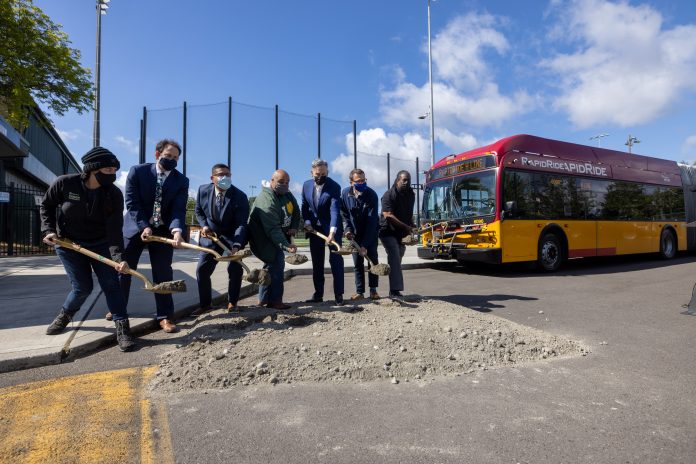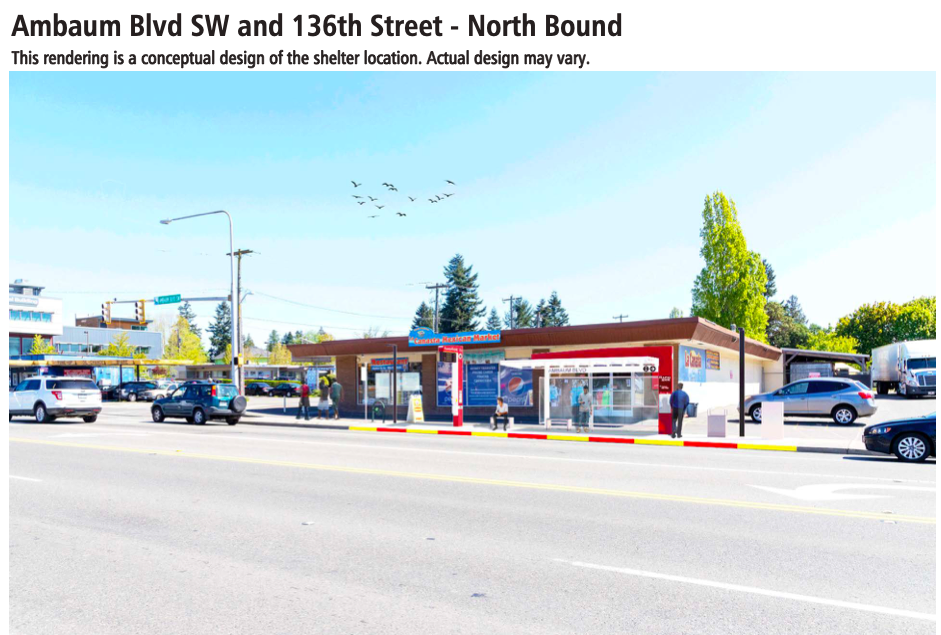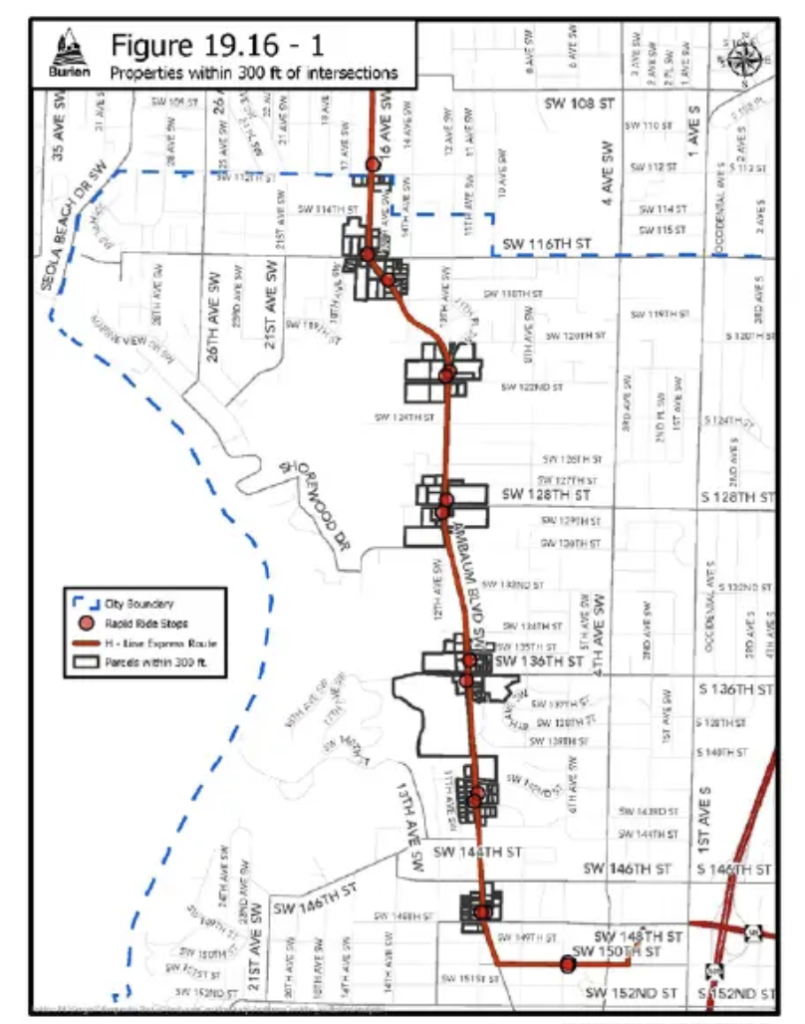
Burien is banking on bus rapid transit (BRT) and code changes to deliver a transit-oriented future on a primary city corridor. With the expected arrival of BRT via the RapidRide H Line in the fall of 2022, Burien has adopted an interim transit-oriented development overlay along the corridor. City planners are conducting a larger community planning study for the Ambaum and Boulevard Park areas that would result in wider regulatory changes in a year or so. For now, the adopted interim regulations establish what planners say are “minimum standards in new development to ensure pedestrian safety and comfort, and to complement the region’s investment in transit.” This allows an interim moratorium on development to be lifted.

The interim regulations are focused on properties within 300 feet of several intersections on Ambaum Boulevard SW. The regulations will emanate from seven intersections, which include SW 112th Street, SW 116th Street, SW 122nd Street, SW 128th Street, SW 136th Street, SW 142nd Street, and SW 148th Street. The selected intersections create special overlay districts that were specifically chosen to overlap with RapidRide H Line stations planned by King County Metro.
Any parcels that fall partially or fully within the 300-foot overlay become fully subject to overlay regulations, except for properties within the Downtown Commercial zone. The scope of new regulations is somewhat narrow, but the regulations critically attempt to promote transit-oriented uses and designs while securing sidewalk improvements. And importantly, where the interim regulations are in conflict with other Burien development standards, the interim regulations entirely supersede other development standards making the overlay a very powerful tool.

The following are key regulations contained in the interim regulations:
- Uses that are obstacles to transit-oriented environments will be prohibited, including drive-throughs, standalone parking, self-storage and outdoor storage, gas stations, and other auto-oriented uses (e.g., automotive repair and vehicle sales).
- On arterial streets, sidewalks will need to be at least eight feet wide. If not, they’ll need to be improved, enhancing the pedestrian realm and walkability.
- Surface parking is restricted to locations that are either behind or to the side of a building, provided that on corner lots surface parking cannot be located next to the street corner. Additionally, parking entrances are discouraged along primary street frontages, making main streets safer for people walking and biking and eliminating the blight that parking entrances create.
- Minimum parking requirements may be waived or reduced if a parking study is produced supporting the modification.
- Front setback requirements do not apply, allowing buildings to be constructed right up to the street.
- Blank walls will be prohibited for any street-facing facade to improve the visual connection between the public and private realms. This helps make the public realm more interesting and active as well as enhances safety (i.e., eyes on the street).
- When development abuts sidewalks, the perimeter frontage landscaping standards will not apply. However, street trees will be required every 30 feet along the frontage. This ensures that frontage landscaping is still provided, but that it will provide a public rather than private benefit and enhance the pedestrian experience.
- Development on corner lots along Ambaum Boulevard SW will be required to provide sidewalk canopies for pedestrians when structures are located within 10 feet of the front property line. The canopies must cover at least five feet of the sidewalk and be located along 50% of the building frontage. Additionally, transparency requirements apply to at least 50% of the street-level facade, which may be met through windows and doors.
During a city council meeting in August, members of the body heard a brief of the code changes and moved the legislation to the consent agenda for September 20th without any fanfare. In fact, councilmembers had no questions and comments. On Monday’s consent agenda, the city council approved the legislation, meaning that it will go into effect in the next week or so.
By prohibiting land uses like surface parking lots that decrease walkability and creating a more inviting pedestrian environment with wider sidewalks and other features that enhance the pedestrian experience, Burien may see a corridor currently dominated by vehicle traffic transform into a place that prioritizes people, potentially setting a standard for other areas of South King County.
Stephen is a professional urban planner in Puget Sound with a passion for sustainable, livable, and diverse cities. He is especially interested in how policies, regulations, and programs can promote positive outcomes for communities. With stints in great cities like Bellingham and Cork, Stephen currently lives in Seattle. He primarily covers land use and transportation issues and has been with The Urbanist since 2014.


